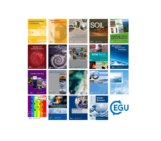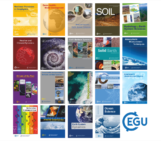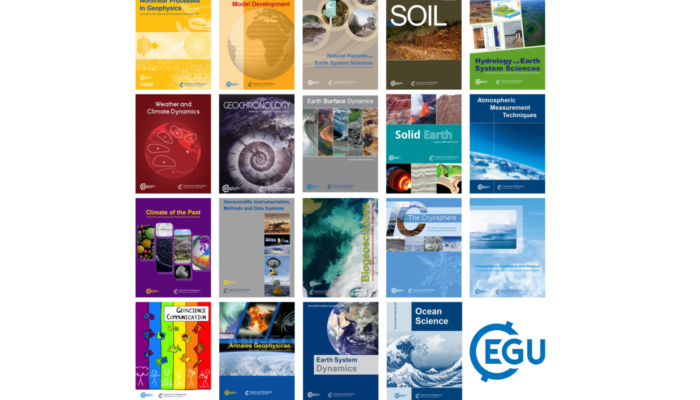
Each month we feature specific Divisions of EGU and during the monthly GeoRoundup we will be putting the journals that publish science from those Divisions at the top of the Highlights roundup. For September, the Divisions we are featuring are: Energy, Resources and Environment (ERE) and Geochemistry, Mineralogy, Petrology and Volcanology (GMPV). They are served by the journals: Geoscientific Model Development (GMD), Earth System Dynamics (ESD) and Solid Earth (SE).
Featured highlights
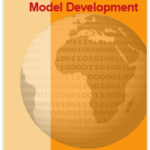 HyLands 1.0: a hybrid landscape evolution model to simulate the impact of landslides and landslide-derived sediment on landscape evolution – 24 September 2020
HyLands 1.0: a hybrid landscape evolution model to simulate the impact of landslides and landslide-derived sediment on landscape evolution – 24 September 2020
Landslides shape the Earth’s surface and are a dominant source of terrestrial sediment. Rivers, then, act as conveyor belts evacuating landslide-produced sediment. Understanding the interaction among rivers and landslides is important to predict the Earth’s surface response to past and future environmental changes and for mitigating natural hazards. We develop HyLands, a new numerical model that provides a toolbox to explore how landslides and rivers interact over several timescales.
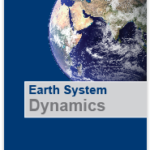 Emergent constraints on transient climate response (TCR) and equilibrium climate sensitivity (ECS) from historical warming in CMIP5 and CMIP6 models – 3 September 2020
Emergent constraints on transient climate response (TCR) and equilibrium climate sensitivity (ECS) from historical warming in CMIP5 and CMIP6 models – 3 September 2020
One of the key questions in climate science is how much more heating we will get for a given rise in carbon dioxide in the atmosphere. A new generation of models showed that this might be more than previously expected. Comparing the new models to observed temperature rise since 1970, we show that there is no need to revise the estimate upwards. Air pollution, whose effect on climate warming is poorly understood, stopped rising, allowing us to better constrain the greenhouse gas signal.
ESD Ideas: Global climate response scenarios for IPCC assessments – 8 September 2020
Policy making on climate change routinely employs socioeconomic scenarios to sample the uncertainty in future forcing of the climate system, but the Intergovernmental Panel on Climate Change has not employed similar discrete scenarios to sample the uncertainty in the global climate response. Here, we argue that to enable risk assessments and development of robust policies this gap should be addressed, and we propose a simple methodology.
Groundwater storage dynamics in the world’s large aquifer systems fromGRACE: uncertainty and role of extreme precipitation – 15 September 2020
Recent assessments of the sustainability of global groundwater resources using the Gravity Recovery and Climate Experiment (GRACE) satellites assume that the underlying trends are linear. Here, we assess recent changes in groundwater storage (ΔGWS) in the world’s large aquifer systems using an ensemble of GRACE datasets and show that trends are mostly non-linear. Non-linearity in ΔGWS derives, in part, from the episodic nature of groundwater replenishment associated with extreme precipitation.
Other highlights
Atmospheric Chemistry and Physics:
Effective radiative forcing and adjustments in CMIP6 models – 3 September 2020
Inconsistencies between chemistry–climate models and observed lower stratospheric ozone trends since 1998 – 10 September 2020
Revisiting global satellite observations of stratospheric cirrus clouds – 15 September 2020
A semi-empirical potential energy surface and line list for H216O extending into the near-ultraviolet – 17 September 2020
The value of remote marine aerosol measurements for constraining radiative forcing uncertainty – 22 September 2020
Quantifying burning efficiency in megacities using the NO2/CO ratio fromthe Tropospheric Monitoring Instrument (TROPOMI) – 24 September 2020
Atmospheric Measurement Techniques:
A global analysis of climate-relevant aerosol properties retrieved from the network of Global AtmosphereWatch (GAW) near-surface observatories – 1 September 2020
Bipolar volcanic synchronization of abrupt climate change in Greenland and Antarctic ice cores during the last glacial period – 8 September 2020
Climatic information archived in ice cores: impact of intermittency and diffusion on the recorded isotopic signal in Antarctica – 10 September 2020
Lessons from a high-CO2 world: an ocean view from ∼3 million years ago – 17 September 2020
Open weather and climate science in the digital era – 1 September 2020
Natural Hazards and Earth System Sciences:
Fire Weather Index: the skill provided by the European Centre for Medium-Range Weather Forecasts ensemble prediction system – 22 September 2020
EGU Science in the News
A snapshot of recent English-speaking news coverage based on research published in EGU’s 19 open access journals:
- Scientists Take on Poetry in the American Physical Society’s journal Physics about the Rhyme Your Research Short Course held during EGU2020: Sharing Geoscience Online
- The River’s Lizard Tail: Braiding Indigenous Knowledges with Geomorphology in the American Geophysical Union’s Eos, based on a press release about a recent study in ESD by Wilkinson et al.
- More than 300 online, print, and broadcast news outlets based on two studies in The Cryosphere about Antarctica’s Thwaites Glacier, including Scientists map Thwaites Glacier’s vulnerabilities on BBC; Antarctica’s colossal Thwaites Glacier is melting fast — and scientists may have discovered why; and Antarctic Glaciers Are Growing Unstable Above and Below Water in Wired
- Majority of Groundwater Stores Resilient to Climate Change in Water Online, Smart Water Magazine, and Bioengineer, based on an ESD study by Shamsudduha and Taylor
- More than two dozen outlets, including com and The Weather Channel, about a joint NASA-EGU press release that covered seven articles published in a special issue of The Cryosphere devoted to The Ice Sheet Model Intercomparison Project for CMIP6 (ISMIP6)

